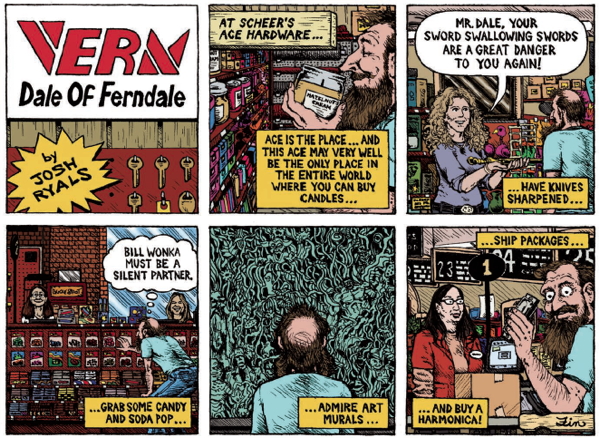By Jeannie Davis
THE LAST FRIDAY IN JULY CAME AND WENT QUIETLY. Not so in the past, when our annual Pub Crawl filled our streets with dedicated, organized drinkers, intent on hitting at least half of the drinking establishments in our small town. A fun evening for everyone, as well as a fund-raiser for assorted non-profits over the years, the Pub Crawl trotted along for several years, before running out of steam last year. The reasons for its demise are varied, but a contributing factor is simply that people change.
Today’s young people don’t enjoy the same thing as yesterday’s young people. Things change, attitudes change, manners, fashions, fads, and accept-able behavior all change. Sometimes for the better, sometimes not.
We generally welcome the changes we make ourselves: New home, new car, clothes, re-decorations. All these things we have control of, and accept gladly. However, we struggle when things are changed for us. If you don’t believe me, read back to some of the remarks on Facebook with respect to the planned parking deck. We know we need it, yet we don’t want things to be different than they are now.
Yet when we consider that our entire lives are about change, why are we so resistant? We grow, educate ourselves (well, some of us do) , change our liv-ing statuses, make new friends, lose friends, forge relationships, lose relationships. Married, adjusted to living with someone, then, either through death or divorce, forced to adjust to living alone. All of this while our bodies are betraying us by aging, no longer able to do the things we did in our youths.
Some of us have endured more adjustments than others. Some have actually embraced new adventures in living, sought out things new and different to do. I find these people more flexible than the more settled folks.
A good example is Sharon, a new senior member who has lived all over the world with a government agency. She is adaptable, and open. I realize that this is not for everyone, and we can be happy and fulfilled living a life in one spot. There are several creative, enthusiastic seniors who have lived in ne place their entire lives. And yet, they have changed within themselves, learning, becoming passionate about one thing, then finding a different passion.
I have noticed within myself over the years, first, totally dedicated to making money, running a business, investing in real estate, whatever it took.
Then, retirement, and open heart surgery shifted my focus. A change was forced on me. My passion became travel, Greece, Italy, Paris… I got high just thinking about a trip.
I became bored with that, and shifted into more local kicks. Volunteering, Senior trips and meetings, political campaigns, Art Commission. I loved seeing events come from the idea stage to fruition, and worked my butt off making it happen.
And now, in my late 70s, I find myself focusing on the spiritual, working within the universe. Following spiritual leaders. Being present now. I am enjoying my one-on-one time with my seniors. Getting to know each of them individually.
So, I guess, we are constantly changing, and most of the time, it is for the better. Look at your life. So many things are nothing like they were at a younger age. Look at your attitude. I am sure you have mellowed, and don’t sweat the small stuff so much. I would hope that you are more confident, and enjoy interactions more. You are more open to change, and do not fear it so much.
This is the new “you.” This is a result of many minor and major changes in your life. Enjoy and revel in this person, but, be aware that, this too will change.
jeannie davis; 248-541-5888
Pub. Note: Ferndale has supposedly “needed” this parking structure for 25 years, yet for all that time we have somehow gotten by without it. In fact, Ferndale only keeps getting better and better! How can that be possible, if we need this thing so badly? Ferndale is great without a massive parking structure. We hope it will continue to be great after the construction mess is cleaned up and the cement is dry, because then it will be too late.



 However, Detroit, which voted to allow usage, has over 250 marijuana dispensaries, many of which dot Eight Mile Rd., conveniently close to a suburban clientele.
However, Detroit, which voted to allow usage, has over 250 marijuana dispensaries, many of which dot Eight Mile Rd., conveniently close to a suburban clientele. horizon as the most difficult issue we will face in this country and as a planet – clean, affordable, accessible fresh water. We must get people talking about water, get them to the water to connect with it, educate them and inspire them about it, and introduce them to the many ways they may get involved with the cause.”
horizon as the most difficult issue we will face in this country and as a planet – clean, affordable, accessible fresh water. We must get people talking about water, get them to the water to connect with it, educate them and inspire them about it, and introduce them to the many ways they may get involved with the cause.”


 unending war in Afghanistan and America’s military actions around the globe seem part of the wallpaper—there in the background, but not affecting anyone in the homeland other than that very small number doing the fighting.
unending war in Afghanistan and America’s military actions around the globe seem part of the wallpaper—there in the background, but not affecting anyone in the homeland other than that very small number doing the fighting. waterfowl: ducks, swans, geese, cranes. This seemed to be a photo of four sandhill cranes. Look closely. It’s five.
waterfowl: ducks, swans, geese, cranes. This seemed to be a photo of four sandhill cranes. Look closely. It’s five.